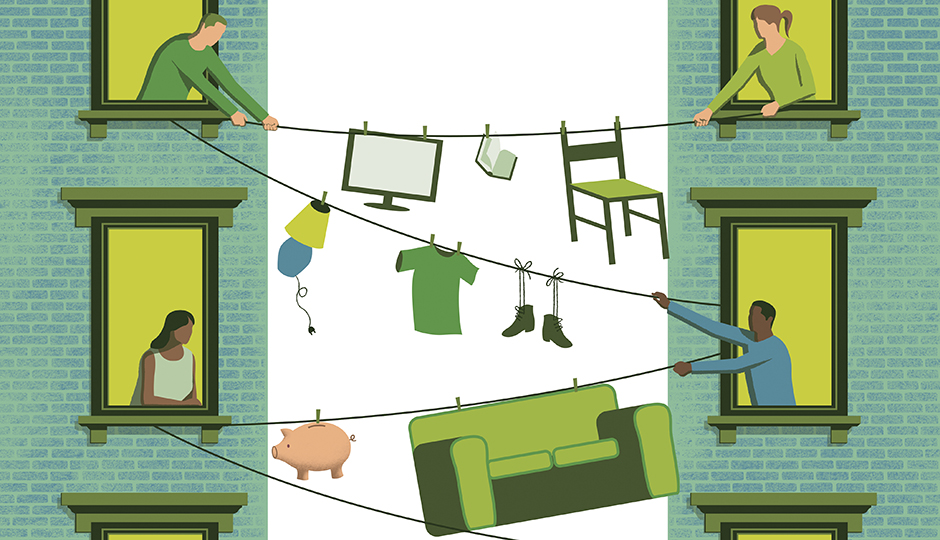The New Frugality: Inside Philly’s Buy Nothing Movement

Illustration by Davide Bonazzi
My husband and I are both independent contractors, which means there are no benefits (apart from working from home a lot). We have two children and an annual income that hovers around $150,000, most of which goes toward health insurance, mortgage, utilities, preschool (our older child is blissfully in public school), and “surprise expenses” like a leaking roof or pop-up hospital stays. The entire remainder is spent on organic grapes.
So buying things like designer handbags and fancy toys simply isn’t in the budget. But more importantly, it’s not even in our mind-set as we increasingly focus on conservation and voting with our dollars. We embrace the idea of minimal consumerism and a sharing economy. Why save up for a new sofa when there’s a perfectly good one a neighbor is itching to unload? Why add to the environmental burden of millions of plastic Shopkins when we can take hand-me-downs from another child who’s bored with them?
This buying (or not-buying) philosophy ramped up for me in 2014 when I read about the Buy Nothing Project (buynothingproject.org), a grassroots movement that started out West, helping real-life neighbors build a sustainable gift economy that would let communities take care of their local members while conserving their carbon footprint. (Unlike Craigslist or Freecycle, Buy Nothing asks members to only ask and give where they live.) Back then, Buy Nothing hadn’t yet made its way to Philadelphia, but that was an easy fix: Buy Nothing Headquarters worked with me to narrow down my “hyperlocal” area to essentially my zip code and set up a Facebook group. Members poured in — more than 100 in less than 24 hours! Families, college students, older renters — from residents of penthouses to those from housing projects, the group is diverse and welcoming. Today the Philadelphia-area project has grown to thousands of members and more than 20 local groups from Newbold to Narberth, offering up everything from curling irons to yogurt makers. And some of this is good stuff — Maclaren strollers, Hanna Andersson jammies, Coach boots. So you’re not exactly trash-picking. Just last week I got a brand-new Keurig 2.0 from a neighbor who realized she preferred her French press.
Over the years, families have passed along clothing, toys, furniture, books, vegetables, crutches, leftover house paint, the “wrong salad dressing we bought by accident,” and kindness — the sort of kindness that harks back to the days when you asked your neighbor for a cup of sugar rather than Amazon Prime a two-pound bag. It was this kindness that brought strangers from the group to my door with meals when I was recovering from an illness last summer.
And while we haven’t literally bought nothing since the project started, we are far less likely to hit up Amazon until we’re sure no one in the neighborhood has snow pants or shin guards to give or lend. We’ve met neighbors, restored some faith in mankind … and saved close to a thousand bucks in the process.
» See more from our Money in Philadelphia package
First published as “The New Frugality” in the April 2017 issue of Philadelphia magazine.


